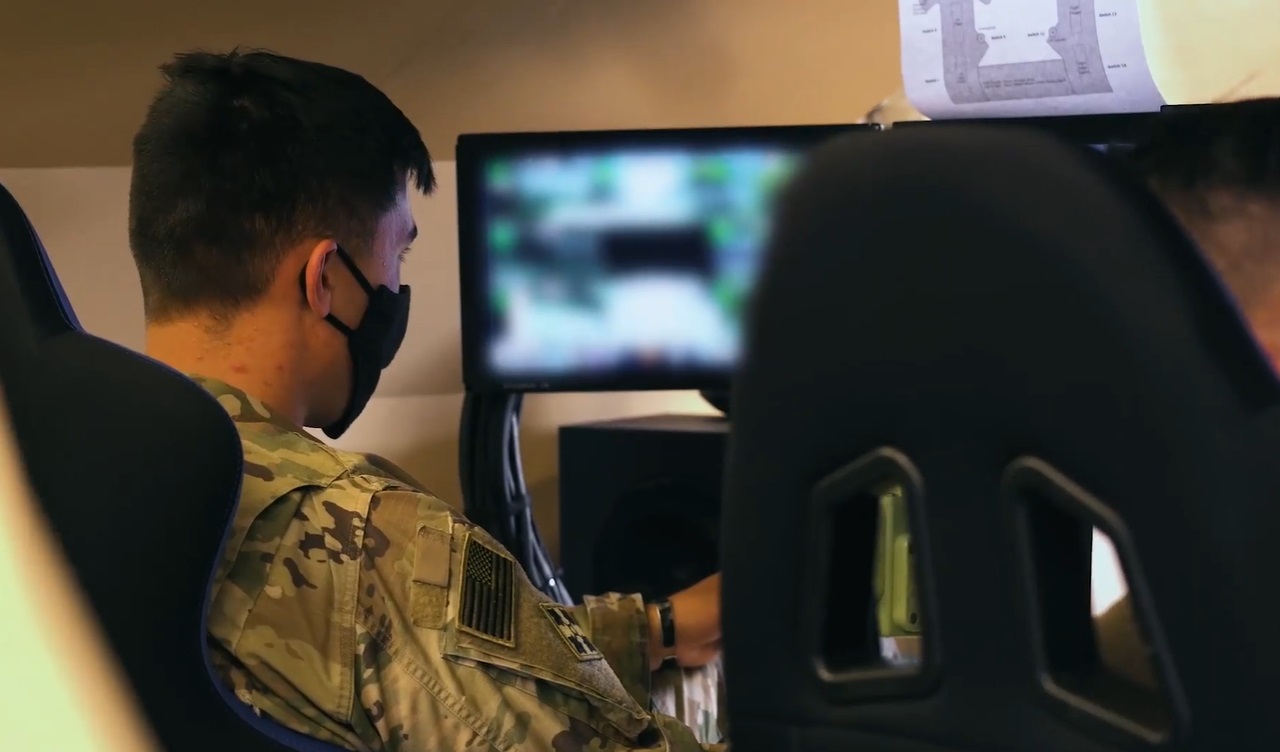The U.S. Army Next Generation Combat Vehicle – Cross Functional Team and CCDC Ground Vehicle Systems Center make progress towards integrating unmanned vehicles into ground combat formations and successfully completed the first soldier operational experiment for the Robotic Combat Vehicle effort at Army Fort Carson.
This is was the first in a series of Soldier experiments the Army is conducting to assess if robotic combat vehicles will increase the lethality of ground combat units. For this initial experiment, the Army has equipped a platoon-sized element of 4th Infantry Division Soldiers with Mission Enabling Technologies Demonstrators (MET-D).
Modified Bradley Fighting Vehicles known as MET-D and modified M113 tracked armored personnel carriers, known as Robotic Combat Vehicles (RCVs) were utilized in the experimentation.
The purpose of the RCV program is to develop of suite of vehicles that can be remotely operated to do two things: provide additional time and space for leaders to make decisions by providing additional reconnaissance capabilities and standoff distance; or to replace Soldiers in high risk activities like combined arms breaches or Chemical, Biological, Radiological, Nuclear, and Explosives (CBRNE) reconnaissance. Ultimately, this program is about giving Soldiers additional tools to make them successful in a complex, and multi-domain battlefield.
The MET-Ds, which are manned with six Soldiers, have 360-degree situational awareness cameras, a remote turret with a 25 mm main gun, and enhanced crew stations with touchscreens. The RCVs are M113 surrogate platforms that also have 360 cameras and fire 7.62 mm machine guns.
The results of the experiment have already made it possible to draw certain conclusions and make changes to the development RCV program.
For example, the Breaking Defense is stated that some of the solutions the soldiers suggested in the experiment were breathtakingly simple, like putting microphones on the robots so the operators can hear what’s going on as well as see through cameras.
“I’m getting no audio,” said Sgt. Matthew Morris, who drives an RCV in the experiment. “That’s not a fundamental technical limitation. It’s just that no one thought to mike up the robot. “We definitely need something along those lines,” the sergeant said.

The Army’s collection of armed robotic combat vehicles showcased an “exceptional” ability to identify enemy positions after about a month of testing, but more development is still needed to improve battlefield precision, said Brig. Gen. Richard Coffman.
Coffman, director of the Next-Generation Combat Vehicle Cross-Functional Team, praised the capabilities of the four robotic combat vehicles, or RCVs, during the platoon live-fire exercises here.
Soldiers from the 4th Infantry Division used two modified Bradley Fighting Vehicles, called Mission Enabling Technologies-Demonstrators, or MET-Ds, to control and maneuver the RCVs to determine whether the autonomous vehicles increased the lethality and efficiency of ground units.
“The ability [to spot enemies] was exceptional, because that reduces the risk on our Soldiers and allows us to remain in a covered and concealed position and make decisions,” Coffman said during a media conference call Thursday.
From inside the MET-Ds, Soldiers were able to control the RCVs up to a 2,000-meter range, but struggled to extend that distance in dense forest regions, Coffman said.

Developers plan to add more features to the vehicles in Phase II of testing, including a new radio tether to increase the operating range, an unmanned aerial vehicle and a target recognition capability based on synthetic data. Phase II, which is scheduled for the first quarter of fiscal year 2022 at Fort Hood, Texas, will feature three platoons of robotic vehicle with control vehicles.
“This is about commanders on the battlefield and giving them more decision space and reducing the risk on our men and women,” Coffman said. “We go into the nastiest places on earth. And these robots are absolutely going to do that in the future. We’re not there 100% yet.”
A third party will evaluate the technical and tactical performance of the operating crews and robotic vehicles, as well as the overall success of the experiment. The findings will then be briefed to the service’s senior leaders.
After the evaluation of Phase II’s results, Coffman said the Army will decide whether to continue testing.

The U.S. Army Next Generation Combat Vehicle – Cross Functional Team and CCDC Ground Vehicle Systems Center make progress towards integrating unmanned vehicles into ground combat formations and successfully completed the first soldier operational experiment for the Robotic Combat Vehicle effort at Army Fort Carson. This is was the first in a series of Soldier
